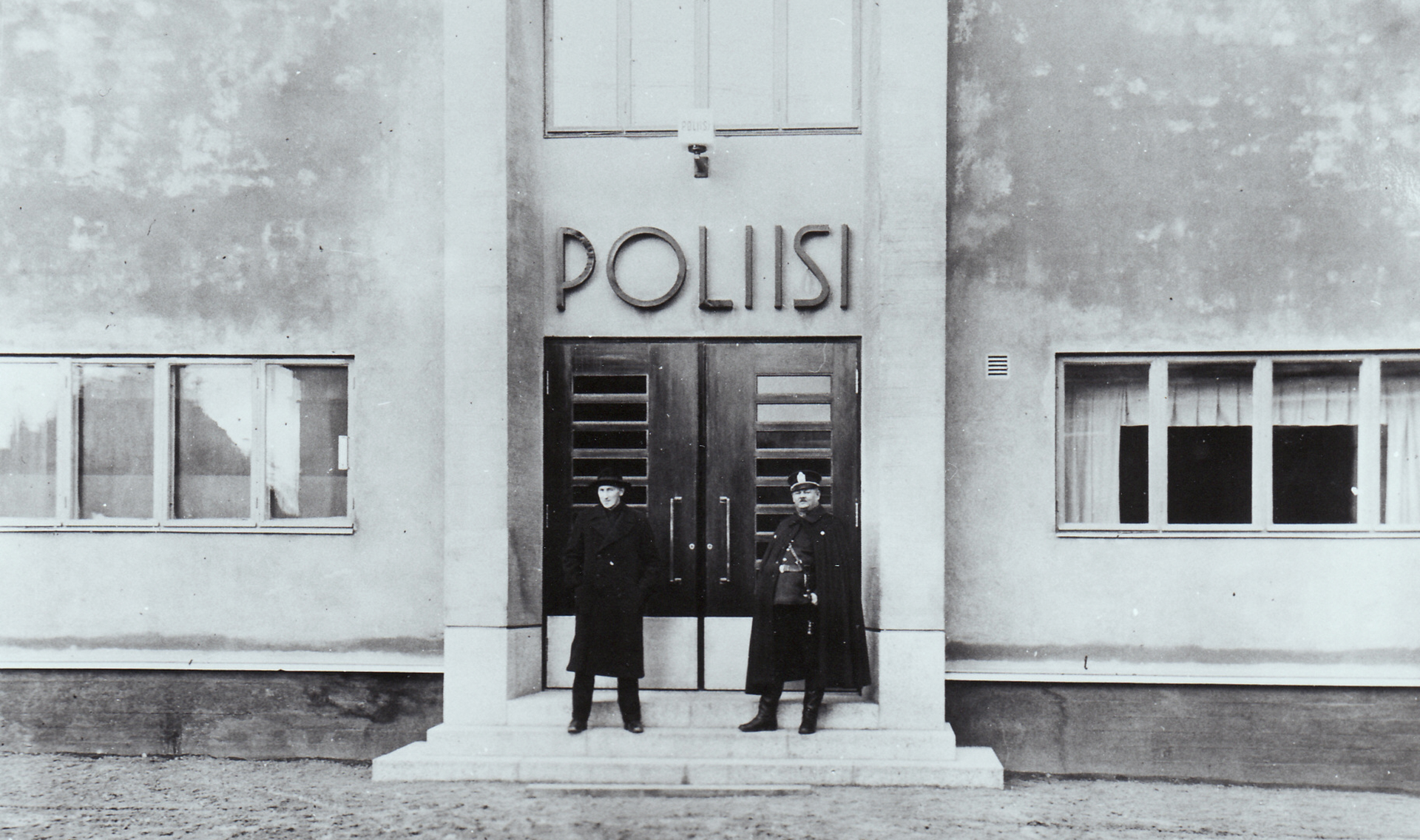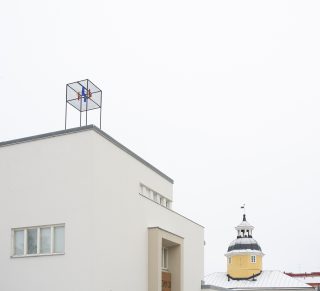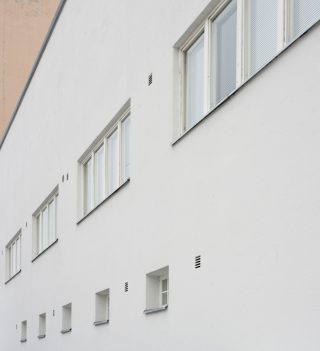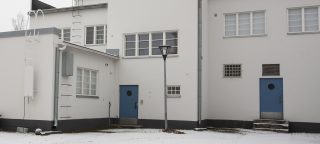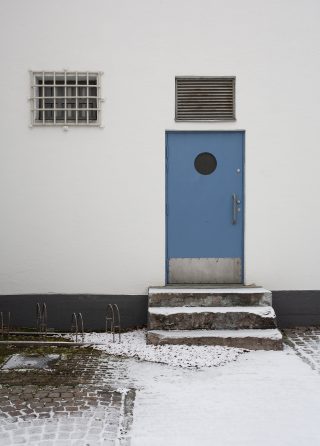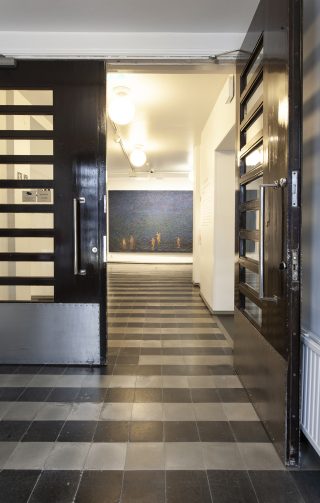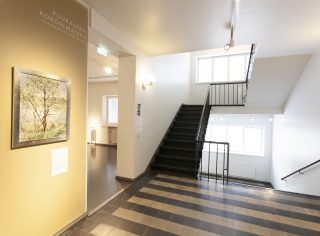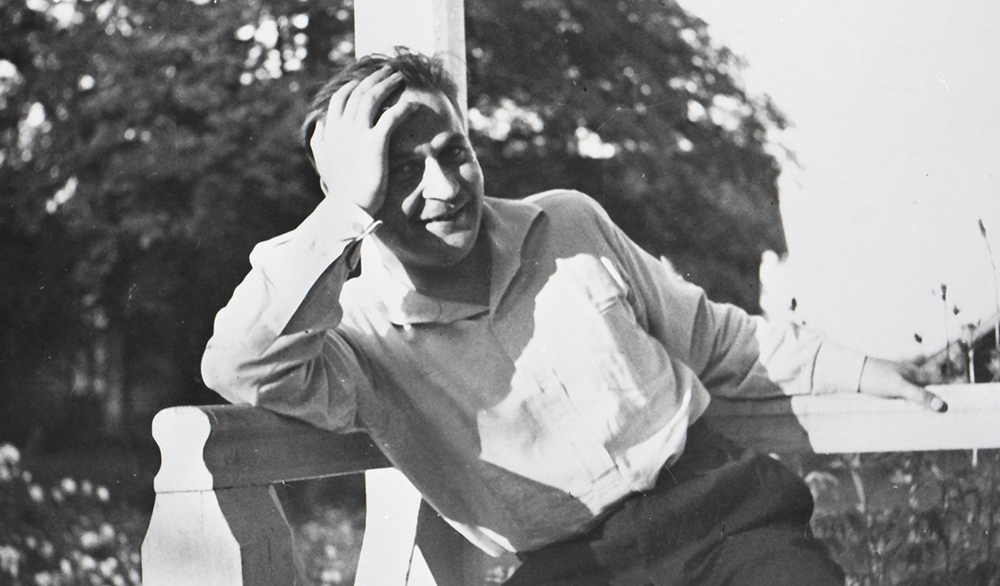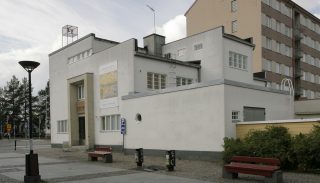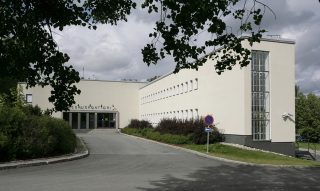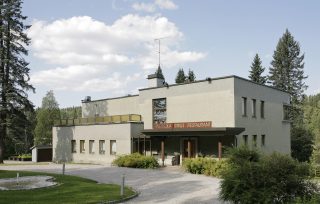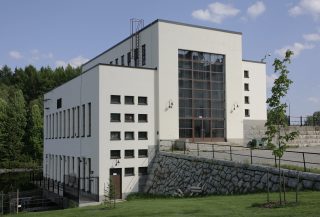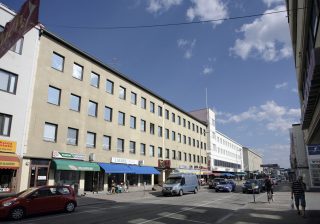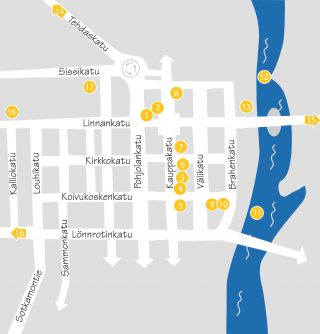These stylistic features are most prominent in Pitkänen’s public works, but small windows or a round window, for example, often also enliven the simplistic appearance of his residential buildings. Some buildings have rounded corners, but cube-like forms nevertheless dominate Pitkänen’s architecture.
Preserved exterior
The appearance of the old police station has remained almost original. In 1965, an extra row of windows was added onto the south-west wall, only to be later bricked up in connection with the renovation of the Art Hall – thus restoring the building’s original appearance. The exterior colour of the building has varied: Under the current lime mortar’s white surface there are also remnants of a light yellow and pink surface.
